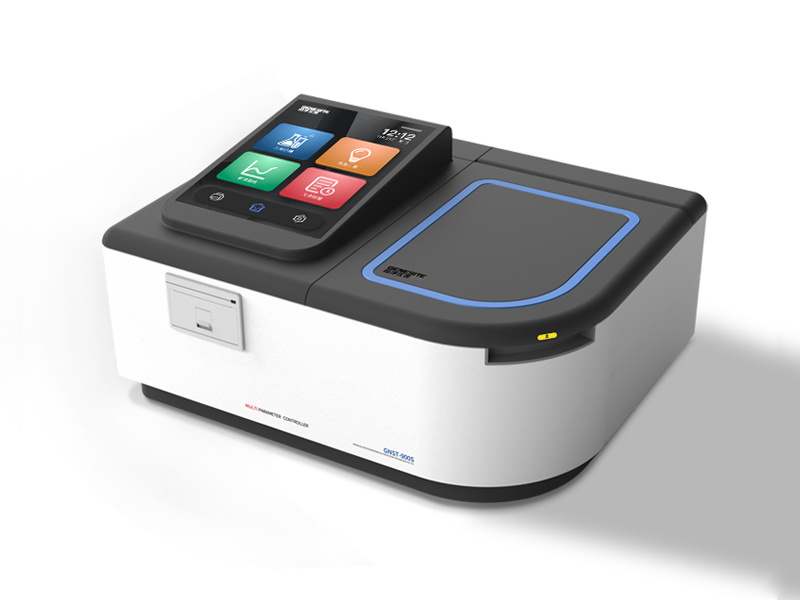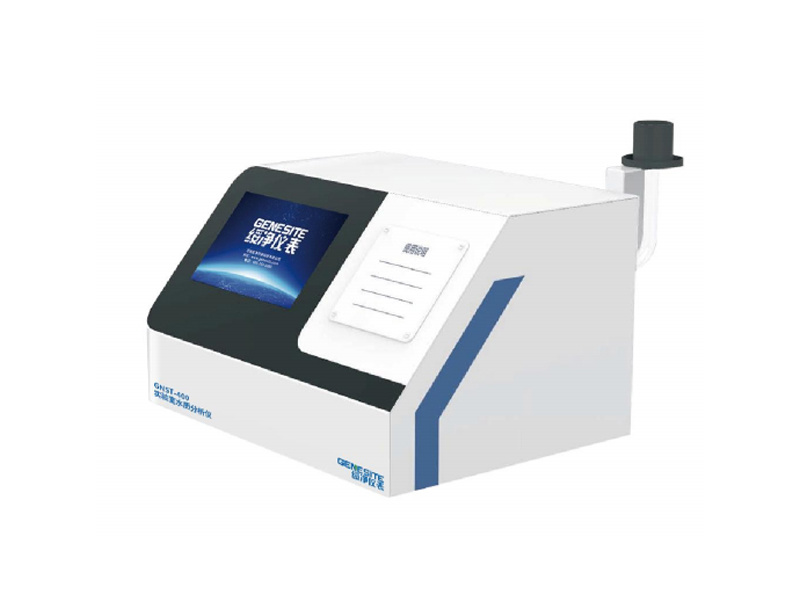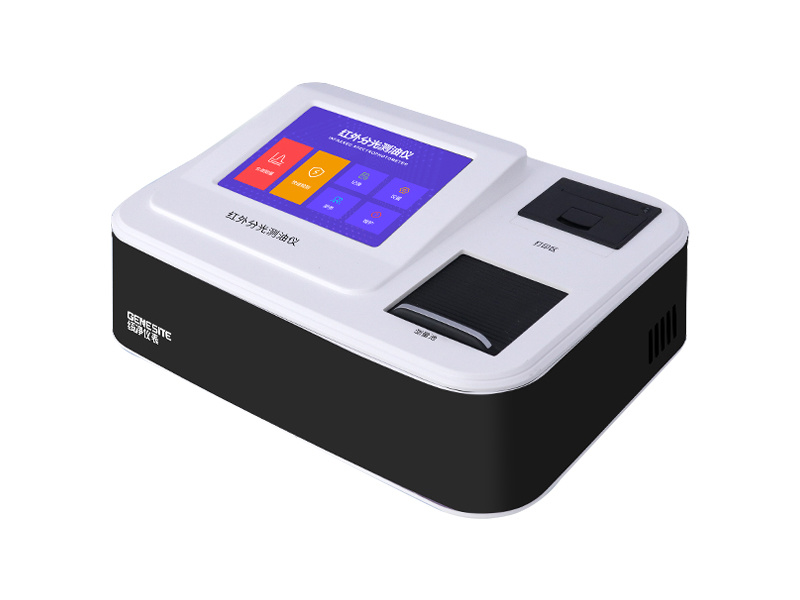
What is 900S Online Water Quality Analyzer?
The 900s online water quality analyzer is a multifunctional spectrometer that has the function of measuring dozens of common water quality chemical parameters and a high-definition touch screen function. We often call it a small sewage monitoring station because of its powerful analysis function and ultra-high accuracy.

When using GNST-900S, what should be paid attention to in order to avoid numerical deviation caused by improper operation?
1. When holding the colorimetric tube or colorimetric bottle, you need to hold the top, and wipe off the water stains or fingerprints on the surface before putting it into the colorimetric tank.
2. During the test, there must be no bubbles on the inner wall of the colorimetric tube and colorimetric bottle, otherwise it will affect the accuracy. The bubbles can be discharged by slightly tilting.
3. The matching reagents are irritating to a certain extent. Please wear matching gloves when using them. If it does not come into deep contact with the skin, wash it immediately with plenty of clean water. If necessary, please seek medical attention in time.
4. Any liquid or foreign matter entering the detection chamber may damage the instrument.
5. If there are scratches, fingerprints, water stains, dust, etc. on the surface of the colorimetric tube. It may affect the test results.
6. The digestion temperature is controlled at 0-180℃, please pay attention to the high temperature warning sign.
7. There must be no liquid or other foreign matter in the digestion channel.
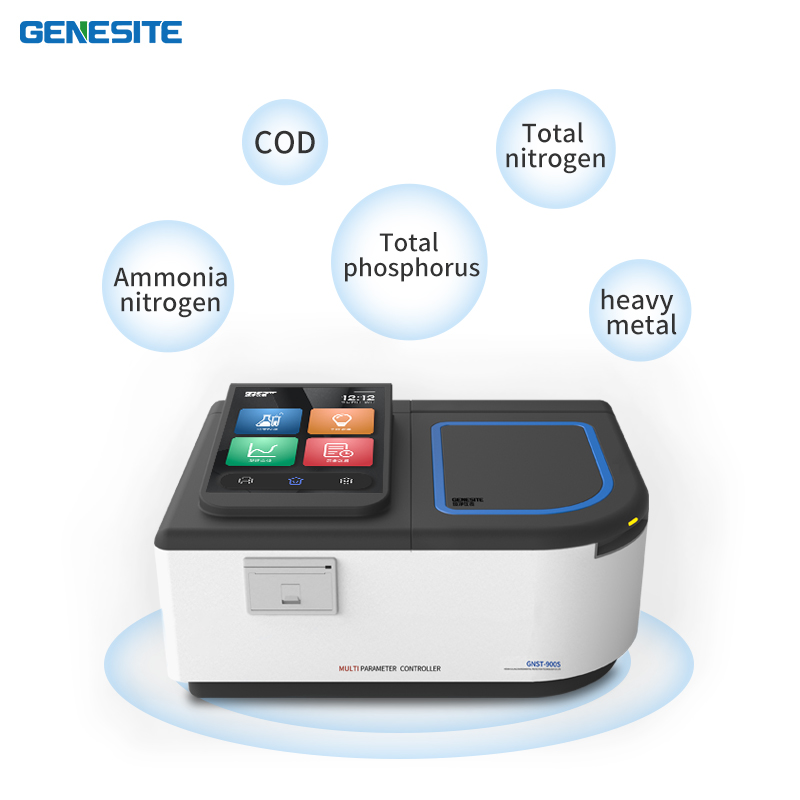
The operation steps of GNST900 total nitrogen
Take the low range as an example, take two empty tubes, add 2ml of distilled water to test tube A, and add 2ml of water sample to be tested to test tube B. Add 1mL of total nitrogen reagent 1 to each of the two test tubes, tighten the lid, and shake well. Wipe the two digestion tubes clean and put them into the digester that has been heated to 125 degrees for 30 minutes. And cover with a protective cover. After the digestion is completed, take out the digestion tube and cool it to room temperature. Add 0.5mL of total nitrogen reagent 2 to test tubes A and B, tighten the lid, shake well, and let it stand for 2 minutes. Take the corresponding number of clean and dry digestion tubes C and D, and add 4mL of mixed total nitrogen reagent 3 (liquid mixed with total nitrogen reagent 3 and 320ml 10:1 concentrated sulfuric acid) to the empty tubes in turn. Take 1mL of the digestion solution in tubes A and B and add them to the digestion tubes of C and D respectively, tighten the lid, and shake well. After standing for 15 minutes to develop color. Select water quality analysis - select total nitrogen (0-20mg/L) to proceed to the next step - put in test tube C and click zero calibration. After the zero calibration is completed, take out test tube C - put in test tube D and click start measurement. At this time, a value appears on the screen, which is the test value - after the test is completed, the test value can be printed in the test record.
Advantage
(1)Support the determination ofCOD,ammonia nitrogen, total phosphorus, totalnitrogen and other water quality pollutants.
(2)Cold light source 200,000 hours optical life, stable performance, accuratedetection results.
8 inch 2K HD color touch screen, clear picture quality, responsive, ABS material,
(3)hightemperature resistant shell.
(4)Built-in mini thermal line printer.Support data printing, and wireless data exportof internet of Things.
(5)Equipped with the Genesite intelligent detection system, it can perform morethan a dozen data averaging calculations per second to improve the accuracy andstability of detection data.
(6)lt is widely used in sewage treatment, rivers and lakes, aquaculture, universityscientific research, petrochemical industry, printing and dyeing textiles, foodprocessing and other fields.
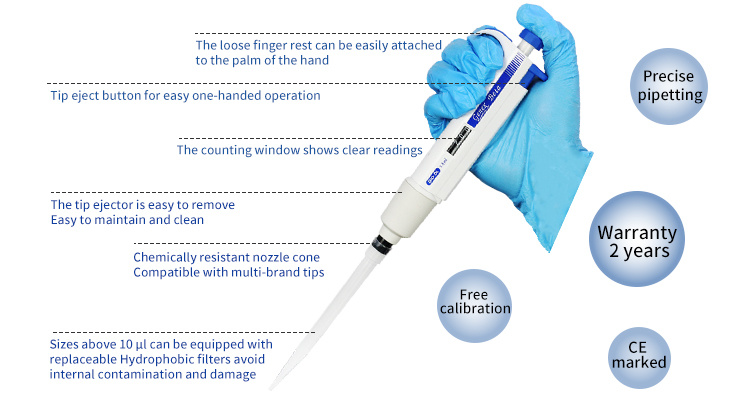
Routine Testing Parameters |
| COD Ammonia nitrogen Total Phosphorus Total nitrogen Suspended solids Turbidity Colorimetry |
Heavy Metal Testing Parameters |
| Copper Nickel Iron Zinc Hexavalent Chromium Total Chromium Cobalt Manganese Aluminum Lead Silver Cadmium |
Other Testing Parameters |
| Permanganate Index Sulfides Fluoride Volatile Phenols Cyanides Residual Chlorine Total Chlorine Chlorine Dioxide Nitrites Nitrate Nitrogen Phosphates Sulfates Silica Chlorides Nitrates Anionic Surfactants pH Total Hardness Total Alkalinity |
1. It adopts high-performance, long-life (100,000 hours), high-brightness light source, and narrow-band filter system. It has strong optical stability and is not easily interfered by various kinds of light.
Design as an all-in-one , GNST-900S has a very low consumption of chemicals .
2. Build-in 800 discharge standards , quick to inquiry the items .
Alarm overweight items,easy to use .
Support curve characteristic,meet your more demands .
3. 1,000,000 data Storage ; 228 curves characteristic ; 40+ parameters test
Wireless & USB interface output to mobile &computer
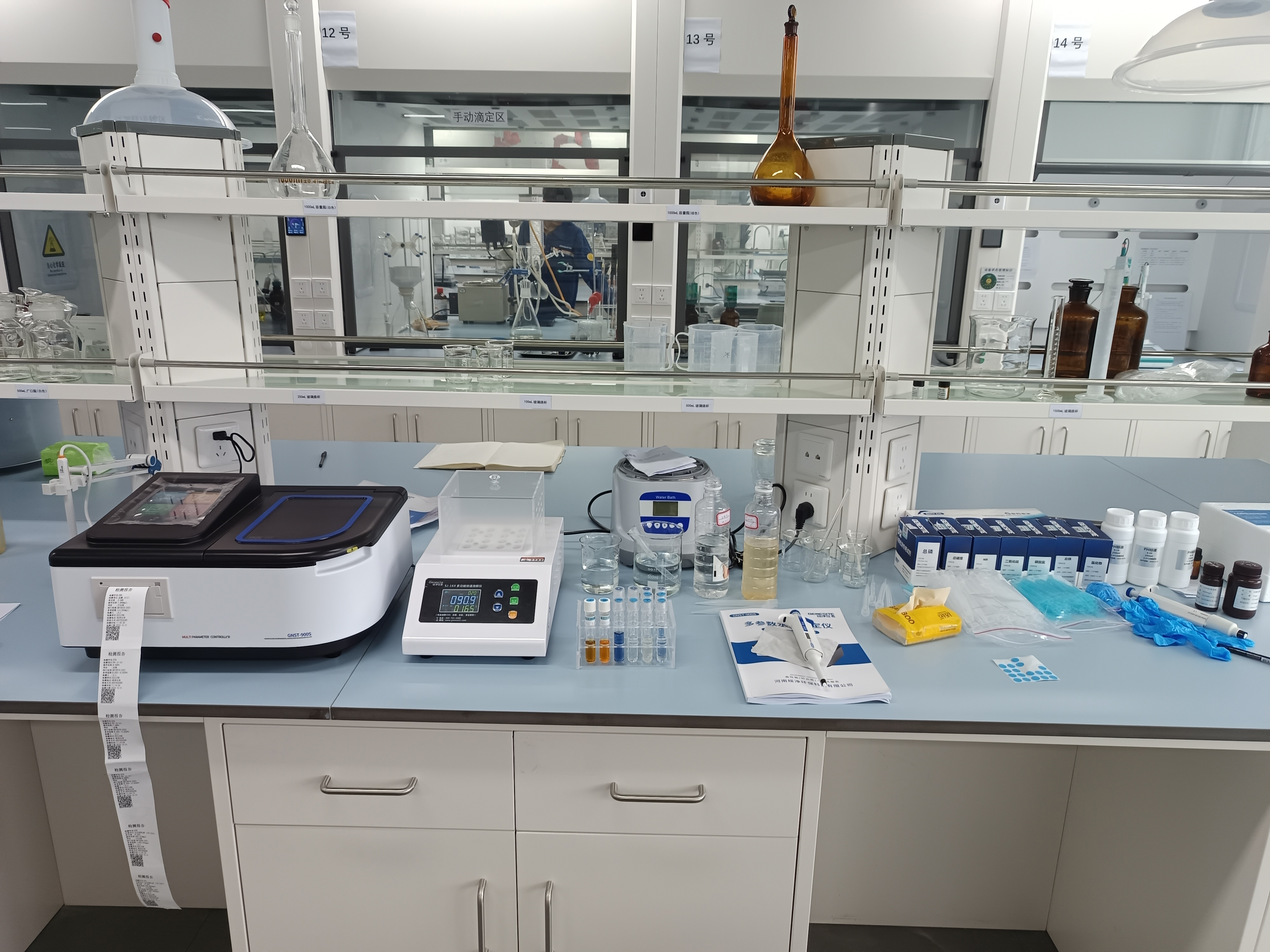
Ammonia nitrogen detection flow chart
Testing crieria: Nessler's reagent spectrophotometry (HJ/535-2009)
Step1: Take a water sampler to be measured.
Step2: Add the reagent
Step3: Shake well and stand
Step4: Place in the detection slot
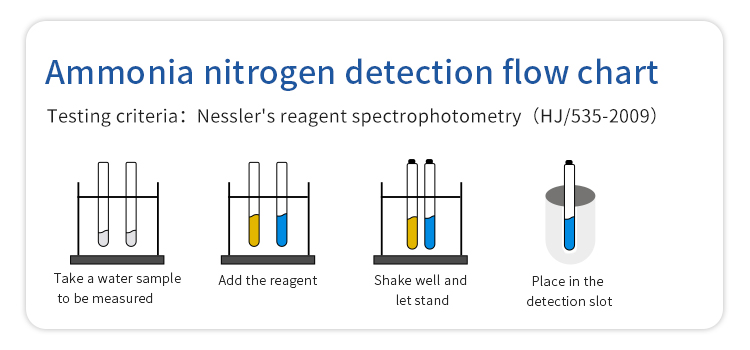
Flow chart of total phosphorus detection
Testing crieria: Ammonium molybdate spectrophotometry (GB/11893-89)
Step1: Take a water sampler to be measured.
Step2: Add the reagent
Step3: Digestion treatment
Step4: Natural cooling
Step5: Add the reagent
Step6: Place in the detection slot
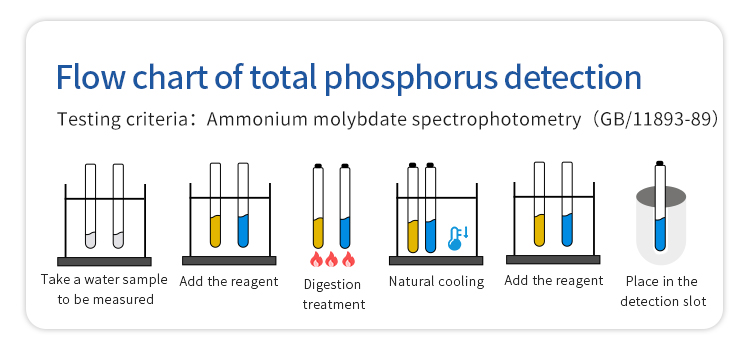
Flow chart of total nitrogen detection
Testing criteria: Ammonium molybdate spectrophotometry(GB/11893-89)
Step1: Take a water sampler to be measured
Step2: Add the reagent
Step3: Digestion treatment
Step4: Natural cooling
Step5: Add the reagent
Step6: Pour the digenstion into an empty tube.
Step7:Add the reagent
Step8:Place in the detection slot
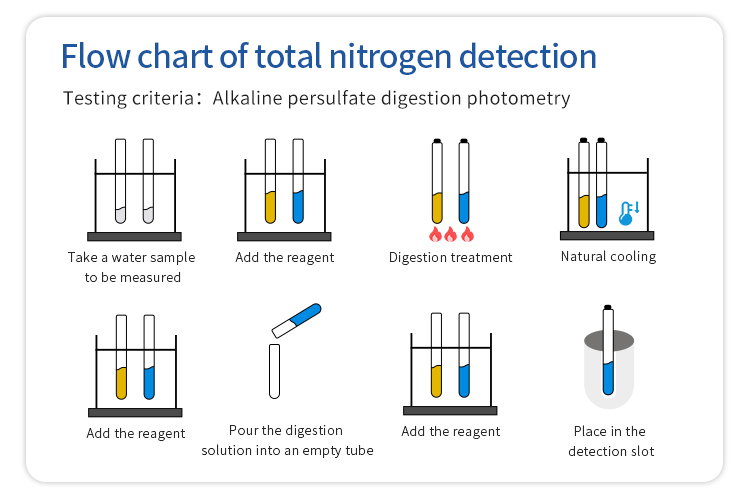
Flow chart of total heavy metals and other contaminant detection
Testing criteria: Ammonium molybdate spectrophotometry(GB/11893-89)
Step1: Take a water sampler to be measured
Step2: Add the reagent
Step3: Place in the detection slot
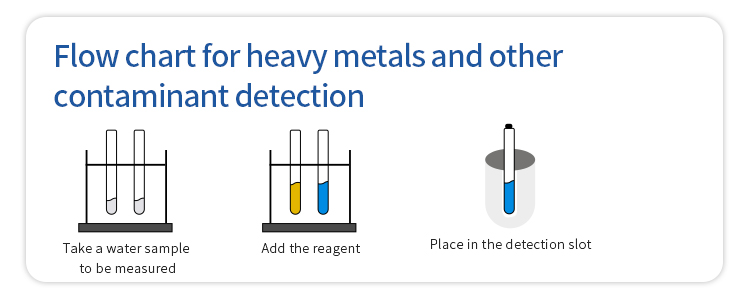
Flow chart of COD detection
Testing criteria: Ammonium molybdate spectrophotometry(GB/11893-89)
Step1: Take a water sampler to be measured
Step2: Add the reagent
Step3: Digestion treatment
Step4: Natural cooling
Step5:Place in the detection slot
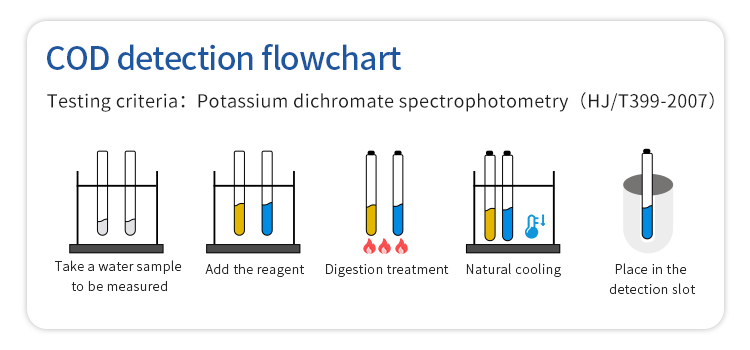
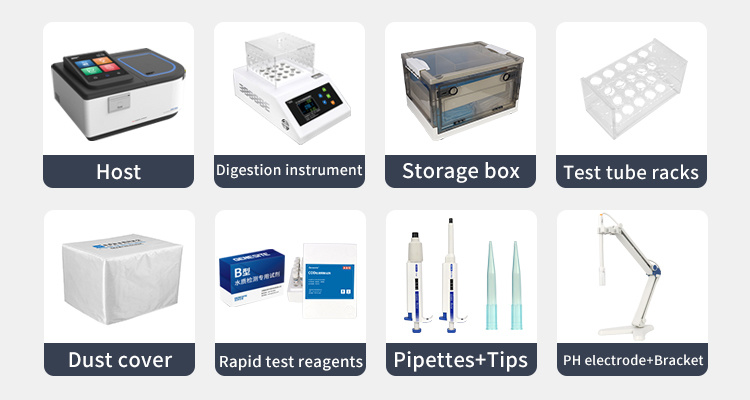

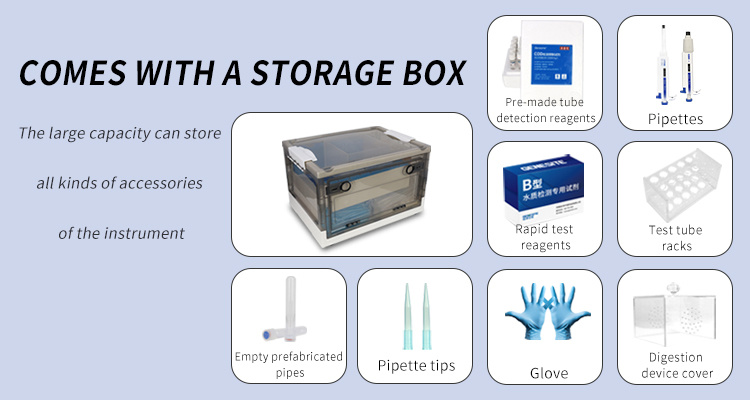
Keywords:
900S Laboratory

900S Laboratory
Contact Us
Classification

